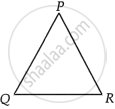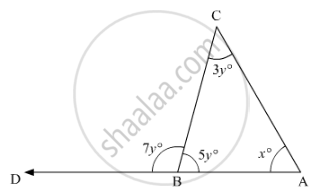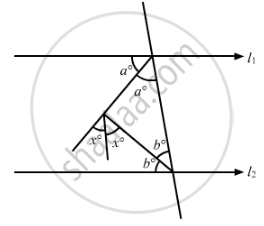Advertisements
Advertisements
Question
In ∆PQR, if ∠R > ∠Q, then ______.
Options
QR > PR
PQ > PR
PQ < PR
QR < PR
Solution
In ∆PQR, if ∠R > ∠Q, then PQ > PR.
Explanation:
Given, ∠R > ∠Q

⇒ PQ > PR ...[Side opposite to greater angle is longer]
APPEARS IN
RELATED QUESTIONS
Two lines AB and CD intersect at O such that BC is equal and parallel to AD. Prove that the lines AB and CD bisect at O.
In an isosceles triangle, if the vertex angle is twice the sum of the base angles, calculate the angles of the triangle.
PQR is a triangle in which PQ = PR and S is any point on the side PQ. Through S, a line is drawn parallel to QR and intersecting PR at T. Prove that PS = PT.
Which of the following statements are true (T) and which are false (F) :
If the altitude from one vertex of a triangle bisects the opposite side, then the triangle may be isosceles.
Which of the following statements are true (T) and which are false (F):
If the bisector of the vertical angle of a triangle bisects the base, then the triangle may be isosceles.
Fill the blank in the following so that the following statement is true.
If altitudes CE and BF of a triangle ABC are equal, then AB = ....
In the given figure, what is the value of x?

If the bisectors of the acute angles of a right triangle meet at O, then the angle at Obetween the two bisectors is
In a ΔABC, ∠A = 50° and BC is produced to a point D. If the bisectors of ∠ABC and ∠ACDmeet at E, then ∠E =
In the given figure, if l1 || l2, the value of x is

